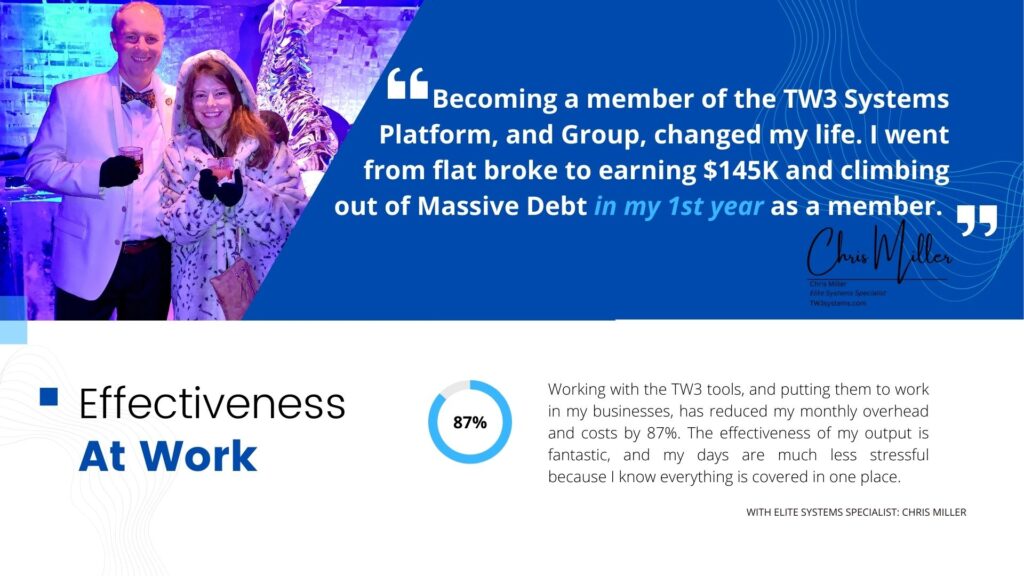Perseverance Mindset: 1 Simple Trick to Make You More Effective in Negotiations
The Miller Mindset: Episode # 0011
Welcome to “The Miller Mindset”, a weekly podcast where we explore the power of positive thinking and its impact on our lives. Join me, Chris Miller, as we dive into such topics as goal- setting, overcoming obstacles, and developing a growth mindset. If you’re looking to improve your life and reach your full potential, then this podcast is for you. Don’t miss an episode. Be sure to subscribe today! On today’s show, we will be discussing how developing a mindset of perseverance in business can help you get to the top of the mountain. So let’s get into it.
As an entrepreneur or business owner, it’s important to have a strong sense of perseverance. Perseverance is your ability to keep going, even when things get tough, and if you are a business owner, I guarantee you this. At one point or another, things will get tough. Because of this, a mindset of perseverance is crucial for the success of your business, and yourself, during these moments of challenges and setbacks.
So, how do you develop a mindset of perseverance?
One way is to focus on your goals and create a plan to achieve them. Break down your goals into smaller, more manageable steps and celebrate each accomplishment along the way. This will help you stay motivated and focused on your end goal because it will always remain in focus, and it will seem more manageable with each task completion.
Success is No Accident
Whatever you want in life, you can get it with the right mindset, training, and direction.
Our program will help you earn $10,000+/month in the first 60 Days. Find out more at: TheMillerFirms.com/Coaching
Another important aspect of perseverance is having a positive attitude.
Embrace challenges as opportunities to learn and grow, rather than as roadblocks. Surround yourself with supportive people who will encourage you and help you stay motivated. Its more about restructuring your approach to how you look at things. For example, if their is something I want to buy, but I don’t have the cash on hand, I don’t even look at it in terms of cost. I look at it in terms of sales needed. That car for example costs $47K. If I look at it as an expense of $47K, that seems like a big purchase and maybe I don’t want to spend that much on a car. On the other hand, the reality is that I can buy the car for the cost of just 5 sales, which I know I can do in about a month. Now that car is not so expensive to me and I might be more inclined to buy it. By having a mindset of perseverance in place, I found another way to look at the problem and find a solution I was happy to live with. That same concept is the concept you need to approach when dealing with your clients as well. Help them find a way to look at it that they are happy to live with.
Now, let’s talk about a simple trick to becoming more authoritative in sales negotiations.
There are many strategies people use in negotiation, but one effective strategy is to use the concept of “anchoring.” Anchoring is a psychological technique where you establish a starting point for the negotiation by throwing out a number or value that is higher or lower than what you actually expect to receive. This creates a reference point for the negotiation and can help you control the direction of the conversation. Sometimes you will get your price without question and you make more money. Other times, you can negotiate a deal which makes the client feel as though they have won in some manner. In either case, you ensure that you get the price you want and then add up a cushion by which to negotiate on.
For example: Many years ago, I built a business as a Hypnotherapist with the goal to work with returning war veterans that had been injured and wanted a drug free solution to dealing with pain management. I got so much out of that work at the time, but first I had to meet the requirements for working with the Department of Veterans Affairs which required that my business be in operation for a minimum of a year before I could be awarded the contract. That meant I would need to see regular clients before I could fulfill my company’s purpose.
I looked first to see what my competitors were doing and what they were charging. There were at least 10 direct competitors within a 20 mile radius of my office, all of them in operation for years already, and all of them charging exactly $35/hr. So using the concept of anchoring, I set my pricing at $100/hr and I made sure that I advertised that price everywhere. I knew that I could settle for as low of $35 if I had to, but I certainly didn’t want to, and I needed a way for my clients to justify coming to the new guy on the block instead of my older, more established neighbors.
The results were that people would call me just to find out why I was the only guy in town charging 3x the price as everyone else. They were curious. They wanted to know what it was I was doing that the others were not. They wanted to understand what I knew that the others didn’t know. Ultimately, they came with me because of the perception that I must be better than the others because I was charging so much more than they were.
I took the business, and negotiated my fee a bit as needed, but most of the time I stuck to my numbers and got the deal at my asking price because I had instantly become the perceived authority by the prospective clients who called. Instant Authority, gained through nothing more than an anchor price, not through merit, work history, social media followers, social proof, client proof, concept proof, or any other means. I did it through my understanding of the psychological insecurity that most people have that they want and feel like they aren’t good enough as they are, and that they want to show the world that they are better.
These insecurities drive people to pay higher prices for status symbols, and $47K cars that won’t do anything more than a $14K car can do for them. Why spend the extra? For the same reason as anything else. We perceive that one is better than the other. This creates a higher reference point in our minds, and in the minds of our buyers as business owners. These perceptions make your initial offer seem more reasonable and actually help them decide on their own that it is better for them to do. In other words, you are helping them find a way to look at it that they are happy to live with.

Conclusion
Well, that’s our show for today folks. I hope you enjoyed and and perhaps learned a little something that you found to be of value to you today. Remember, developing a mindset of perseverance is crucial for your success in business. Focus on your goals, maintain a positive attitude, and surround yourself with supportive people that have the skills, resources, and motivations to build you up for your success. If you want to work on becoming more authoritative in sales negotiations, try using this anchoring technique we discussed here today to establish a reference point and gain a better control of the conversation as you go through your sales cycle. If you feel you enjoyed the show, please do leave me a comment, and don’t forget to subscribe as well so you don’t miss a thing. You can also see this episode in blog form if you like, and sign up to receive email alerts when new episodes are released at themillermindset.com. Until then, I’m Chris Miller, reminding you to always keep smiling.
On the Next Episode:
Next time, on The Miller Mindset, we’ll be exploring the importance of having an Adaptability element in your mindset for growing long-term business growth, and I’ll provide you with a another little known trick, just like the one we discussed here today, that can help you stay on top of the competition as you continue to grow your business. That’s next Tuesday, June 20th, 2023 at 2pm EST; so Don’t miss it.
Want more Episodes of The Miller Mindset.
Subscribe to our Episode Alerts here.
Follow us on Social:
Also, check out Episode two: 3 Simple Steps: Maximize your Strengths and Down Play Weaknesses
Episode three: Creating a Cultural Mindset of Growth for Your Business
Episode four: Mindset for Productivity – Revealing the Simple Truth
Episode 5: Overcome Imposter Syndrome: Use These 2 Simple Tips For Results
and Episode 6: Time Efficiency: When You Make Small Mindset Shifts For Big Improvements
Schedule an Appointment to speak with Chris Miller and discuss ways you can improve your mindset and grow as a business leader. Pick a time that works for your schedule now: Access Chris’ Calendar.


